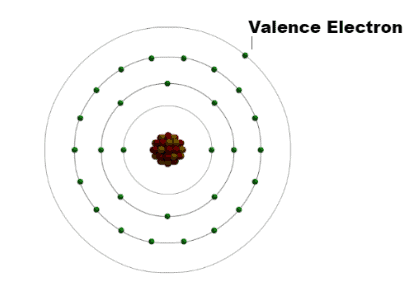Valence Electrons

Valence electrons are the electrons in the outermost energy level (shell) of an atom. These electrons are involved in chemical bonding and determine the chemical properties and reactivity of the atom. Here are some key points about valence electrons:
Location: Valence electrons are located in the highest energy level (outermost shell) of an atom. This energy level is often referred to as the valence shell.
Number: The number of valence electrons an atom has depends on its position in the periodic table. For main group elements (groups 1, 2, 13-18), the number of valence electrons is equal to the group number. For example, all elements in Group 1 (alkali metals) have 1 valence electron, while elements in Group 18 (noble gases) have 8 valence electrons except for helium, which has 2.
Chemical Bonding: Valence electrons are involved in the formation of chemical bonds between atoms. They can be gained, lost, or shared in order to achieve a stable electron configuration, typically similar to that of a noble gas. Atoms tend to gain, lose, or share electrons to attain a full outer shell, which corresponds to 8 electrons (except for hydrogen and helium, which only need 2 electrons to achieve stability).
Determining Reactivity: The number of valence electrons determines an atom's reactivity and chemical behavior. Elements with similar numbers of valence electrons tend to exhibit similar chemical properties and form similar types of compounds. For example, elements in the same group of the periodic table have similar valence electron configurations and often display similar reactivity.
Representative Elements: For representative elements (also known as main group elements), the number of valence electrons can be easily determined from the group number. For transition metals and inner transition metals, determining the number of valence electrons can be more complex due to the presence of multiple energy levels and partially filled d or f orbitals.
In summary, valence electrons are the electrons in the outermost energy level of an atom and are involved in chemical bonding. They play a crucial role in determining the reactivity, chemical properties, and bonding behavior of elements, as well as the formation of chemical compounds.
Thank you,